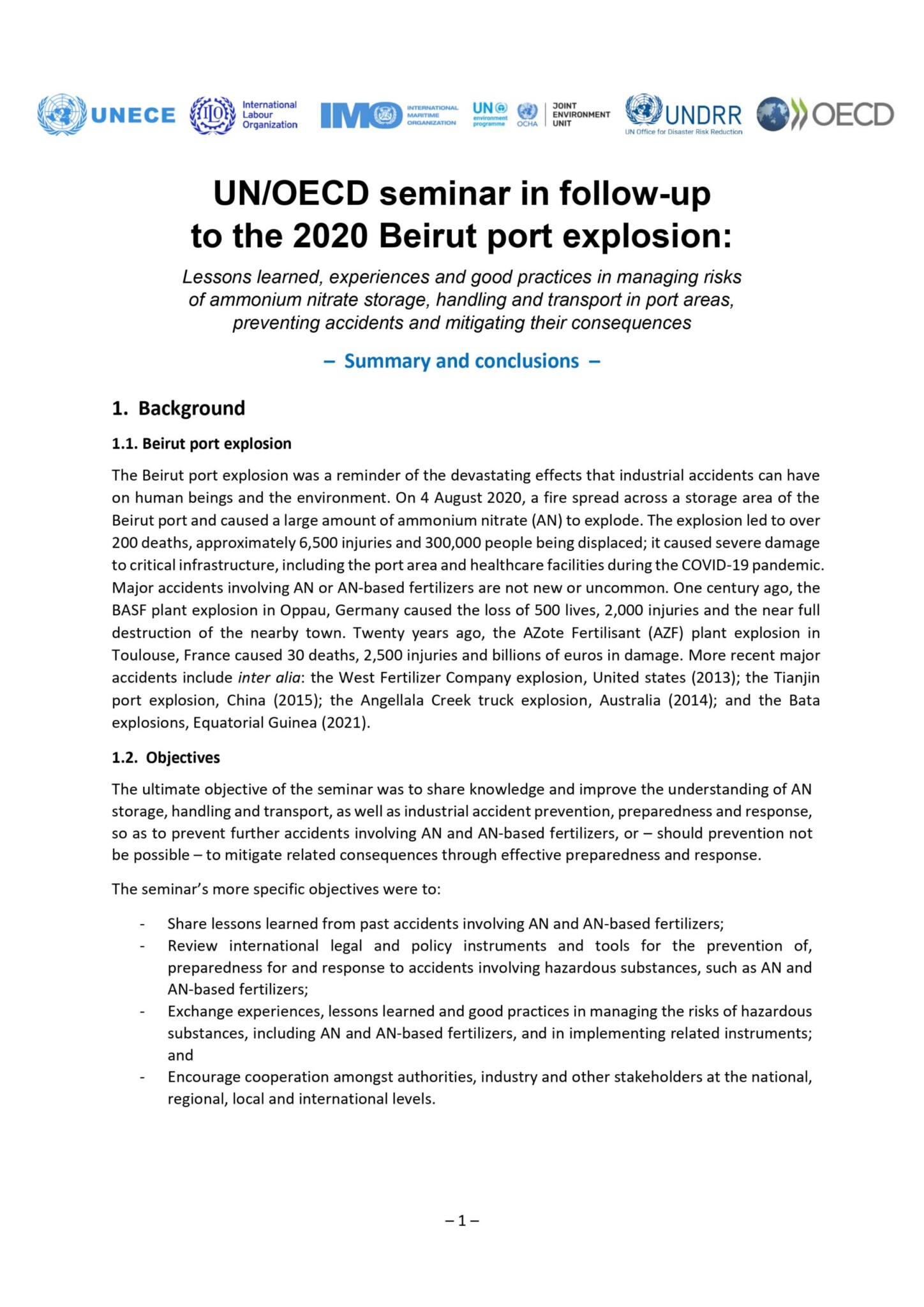Conclusions from UN/OECD Seminar on the 2020 Beirut port explosion
Please find attached the summary and conclusions report of the UN/OECD Seminar in follow-up to the Beirut port explosion: Lessons learned, experiences and good practices in managing risks of ammonium nitrate storage, handling and transport in port areas, preventing accidents and mitigating their consequences (online, 14 December 2021). Over 500 people from 48 countries, 15 international organizations, 5 NGOs, 102 industry associations/companies and 32 universities/national research institutes participated worldwide.
The 2020 Beirut port explosion was a reminder of the devastating effects that industrial accidents can have on human beings and the environment. A fire spread across a storage area of the Beirut port and caused a large amount of ammonium nitrate (AN) to explode, leading to over 200 deaths, 6,500 injuries, 300,000 people being displaced and severe damage to critical infrastructure. The seminar showed that major accidents involving AN or AN-based fertilizers are not new or uncommon. Over the last century, major explosions or dangerous decomposition incidents involving AN have occurred across the globe, including, among other places, in Australia, Brazil, China, Equatorial Guinea, France, Germany and the United States. These have caused too many deaths and injuries and too much damage.
The seminar demonstrated that many international legal and policy instruments and guidelines exist to prevent, prepare for and respond to industrial accidents involving hazardous substances, including AN and AN-based fertilizers, and subsequent technological disasters. However, implementation of these needs to be strengthened in order to prevent accidents and to prepare for them should they occur. National and local authorities presented their good practices and lessons learned in managing the risks of AN storage, handling and transport that provide examples for authorities in other countries to strengthen implementation.
For further information, please click here
Warehousing and storage guidance
Increased volumes of dangerous goods transported in sea containers, and the occurrence of major incidents such as that in Beirut as well as lesser accidents, identified for us a clear need for guidance on safe storage and handling of dangerous goods in warehouses, including port and terminal facilities. Building on our combined expertise and experience, ICHCA International alongside our colleagues in the International Vessel Owners Dangerous Goods Association (IVODGA), National Cargo Bureau (NCB) and World Shipping Council (WSC) responded to this critical requirement by developing a Dangerous Goods Warehousing White Paper. Copy attached.
A pivotal element of our guidance is a Warehouse Checklist. Given our aim to provide a practical management tool, we believe the Checklist format is a significant addition to the other elements of the White Paper. Broken down into eight key functional areas of operation, this comprehensive 14-page Checklist is designed as both a planning guideline and a review tool, as well as an everyday device for maintaining safety management vigilance.
The guidance and checklist are freely available from: https://ichca.com/warehousing-safety-guidance and are endorsed by several further respected international organisations.

